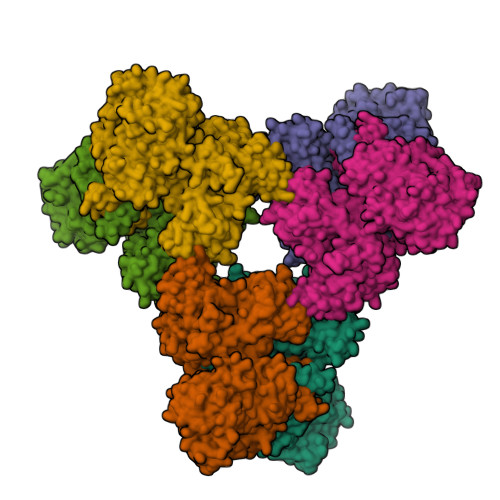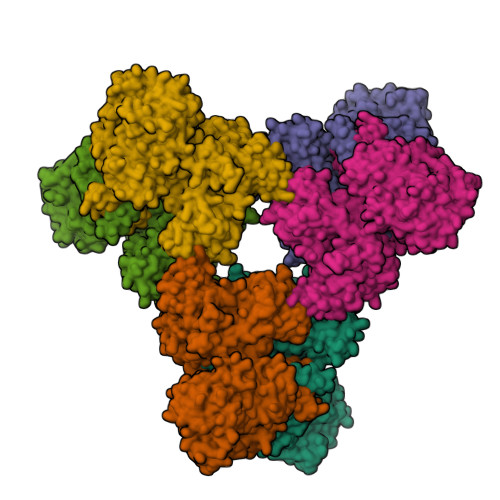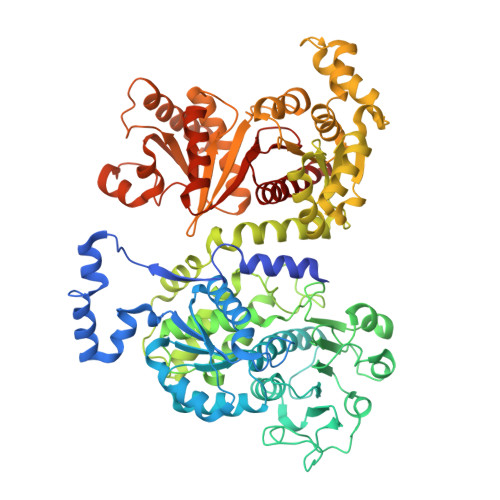A rotary mechanism for allostery in bacterial hybrid malic enzymes.
Harding, C.J., Cadby, I.T., Moynihan, P.J., Lovering, A.L.(2021) Nat Commun 12: 1228-1228
- PubMed: 33623032
- DOI: https://doi.org/10.1038/s41467-021-21528-2
- Primary Citation of Related Structures:
6ZN4, 6ZN7, 6ZN9, 6ZNE, 6ZNG, 6ZNJ, 6ZNK, 6ZNR, 6ZNT, 6ZNU - PubMed Abstract:
Bacterial hybrid malic enzymes (MaeB grouping, multidomain) catalyse the transformation of malate to pyruvate, and are a major contributor to cellular reducing power and carbon flux. Distinct from other malic enzyme subtypes, the hybrid enzymes are regulated by acetyl-CoA, a molecular indicator of the metabolic state of the cell. Here we solve the structure of a MaeB protein, which reveals hybrid enzymes use the appended phosphotransacetylase (PTA) domain to form a hexameric sensor that communicates acetyl-CoA occupancy to the malic enzyme active site, 60 Å away. We demonstrate that allostery is governed by a large-scale rearrangement that rotates the catalytic subunits 70° between the two states, identifying MaeB as a new model enzyme for the study of ligand-induced conformational change. Our work provides the mechanistic basis for metabolic control of hybrid malic enzymes, and identifies inhibition-insensitive variants that may find utility in synthetic biology.
Organizational Affiliation:
Department of Biosciences, University of Birmingham, Birmingham, UK. cjh30@st-andrews.ac.uk.

















